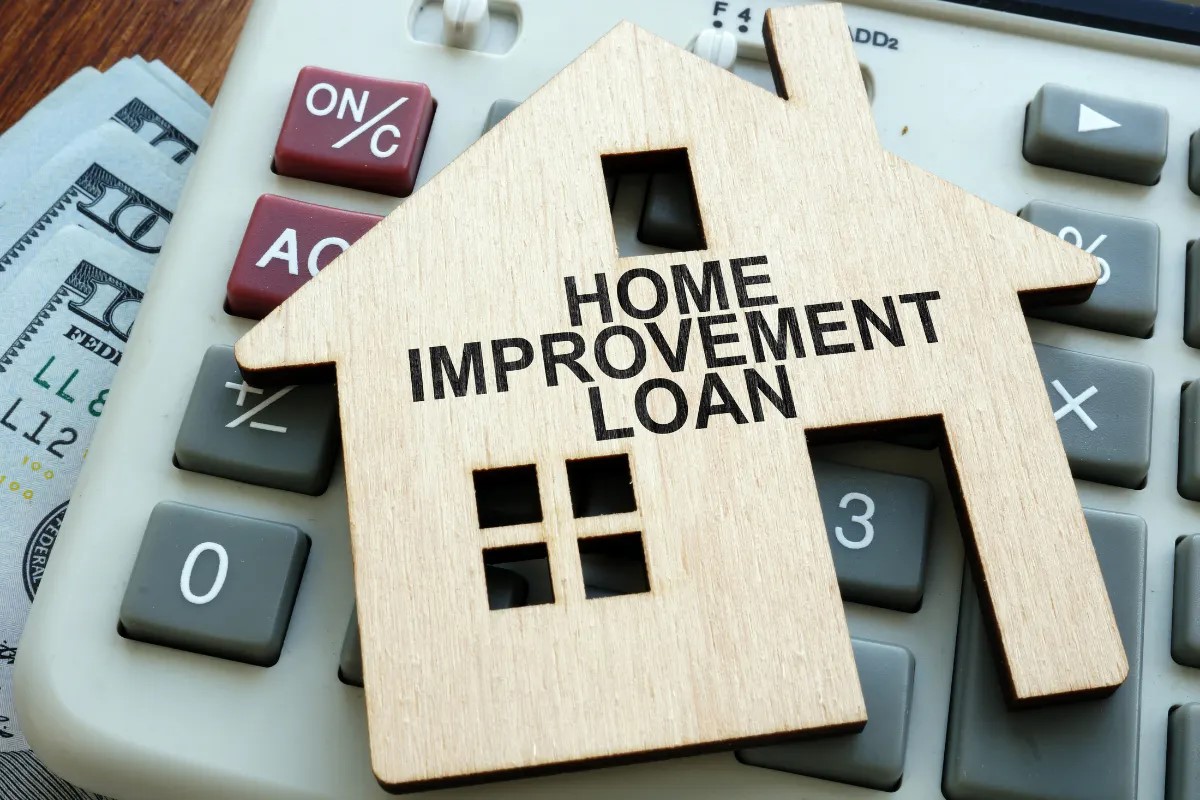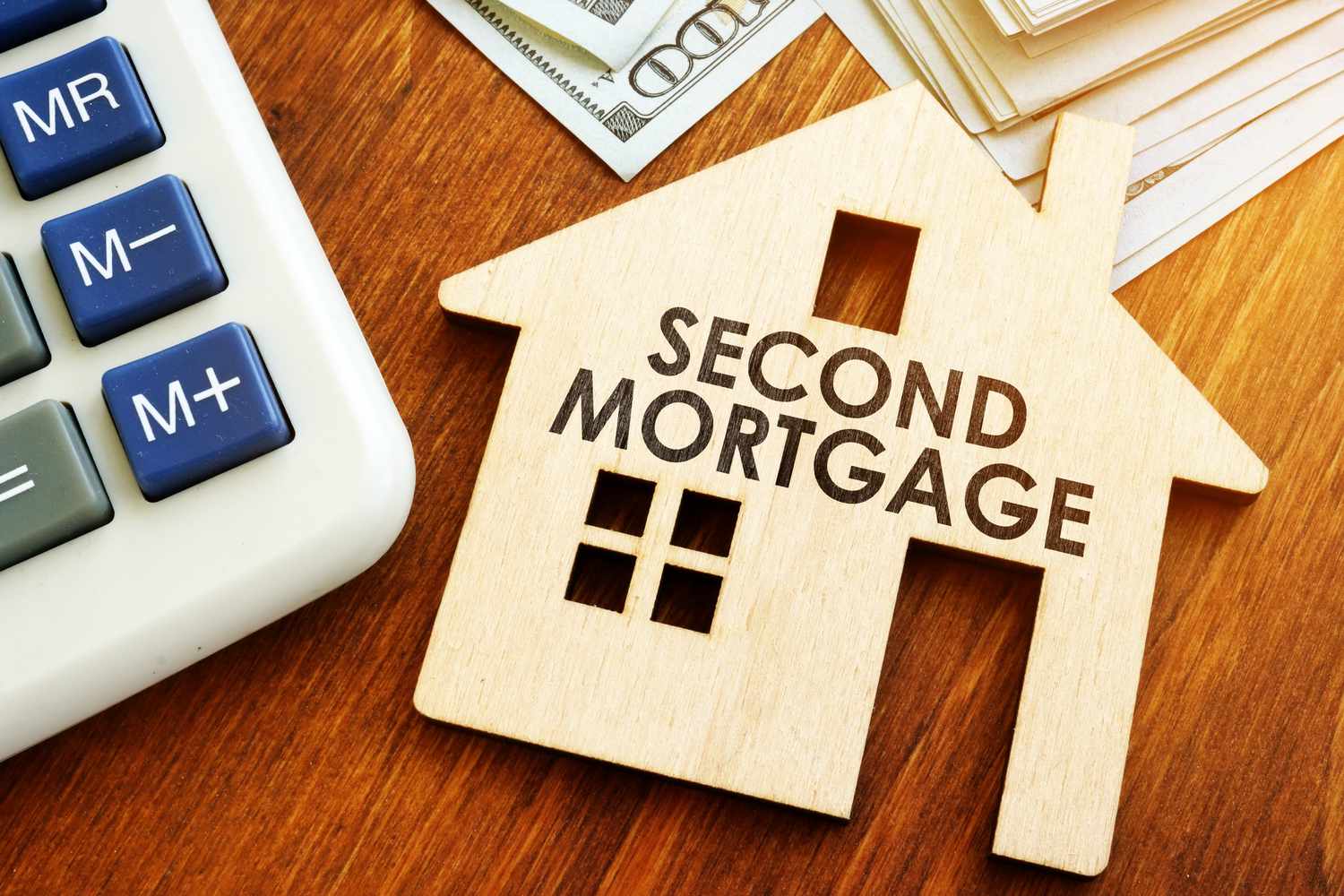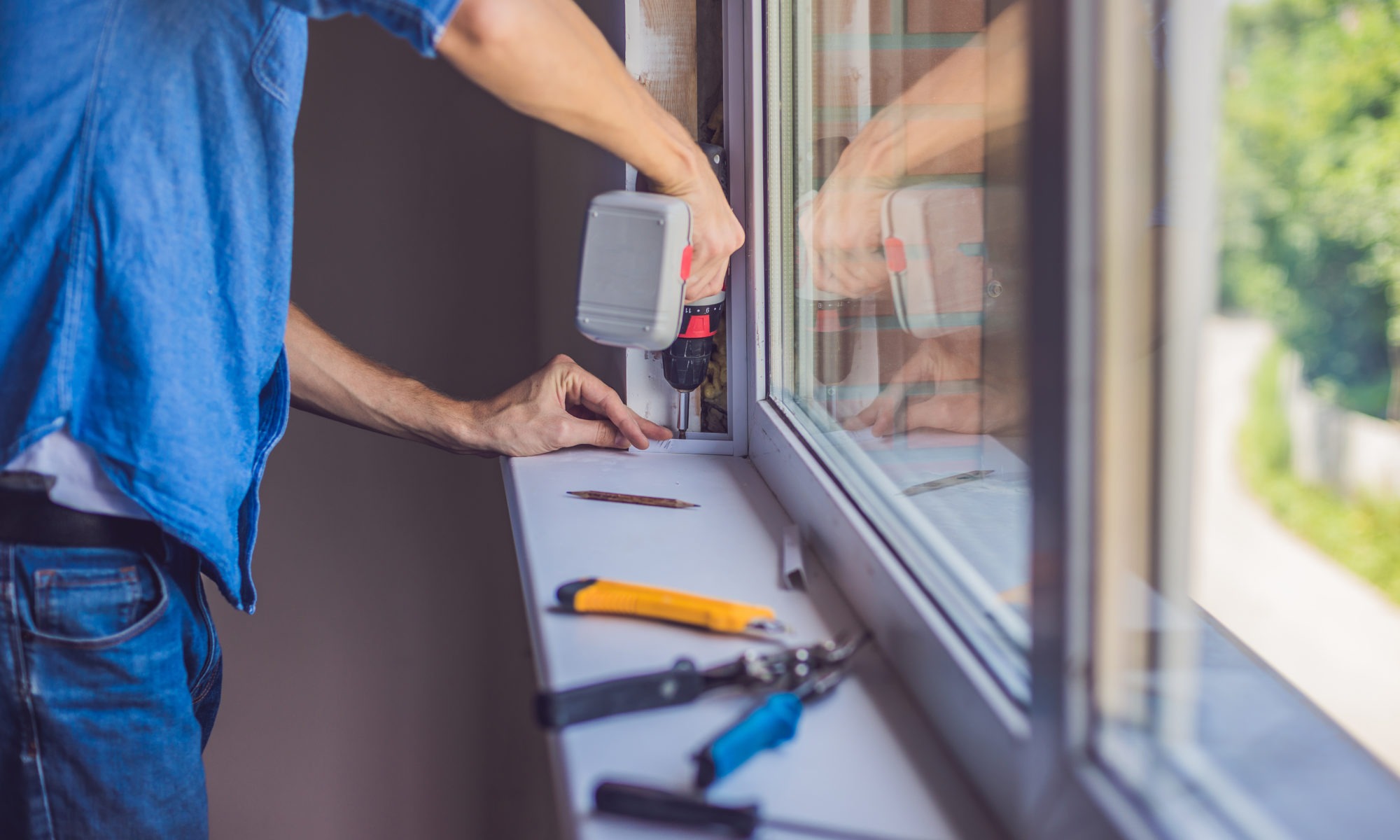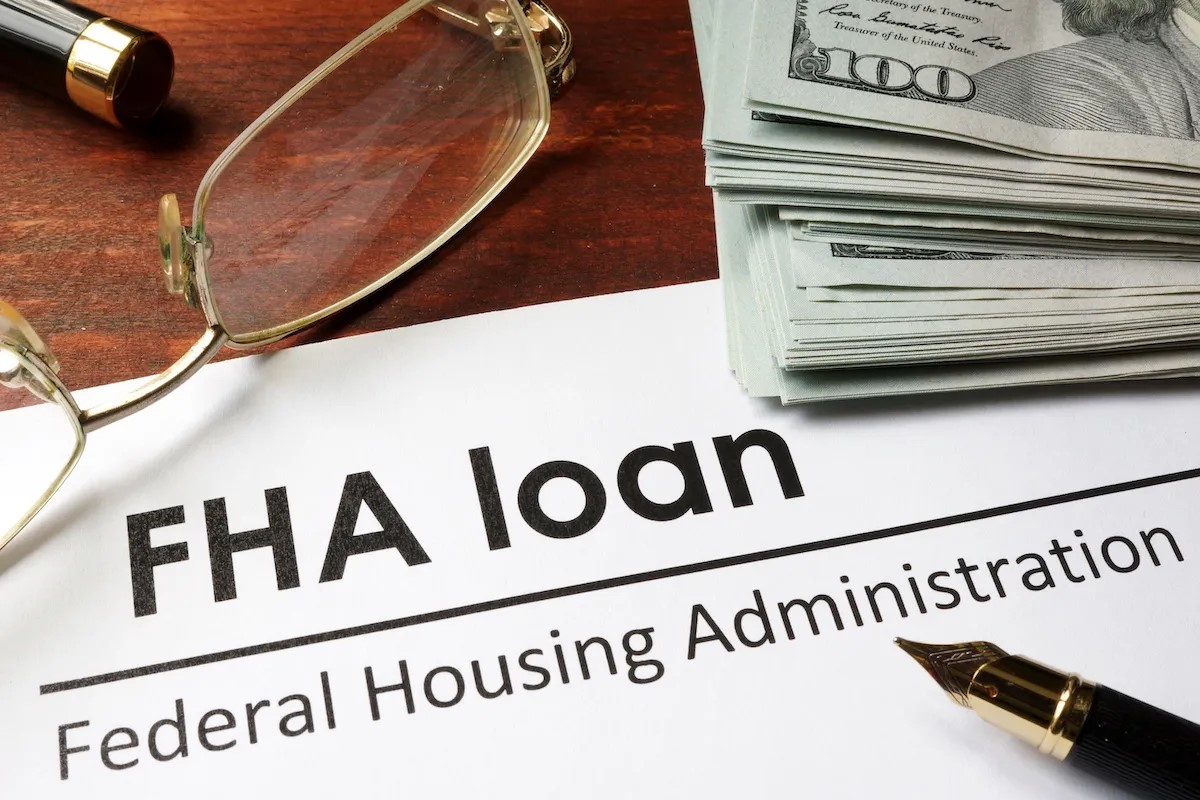Home>Renovation & DIY>Home Renovation Guides>How To Get A Home Improvement Loan With A New Mortgage


Home Renovation Guides
How To Get A Home Improvement Loan With A New Mortgage
Modified: January 9, 2024
Learn how to obtain a home improvement loan alongside a new mortgage with our comprehensive home renovation guides. Get expert tips and advice today.
(Many of the links in this article redirect to a specific reviewed product. Your purchase of these products through affiliate links helps to generate commission for Storables.com, at no extra cost. Learn more)
Introduction
Are you considering making significant improvements to your home but are unsure about the financial aspect of the project? Many homeowners find themselves in this situation, where they have a clear vision of the enhancements they want to make, but lack the necessary funds to bring their dreams to life. This is where a home improvement loan with a new mortgage can come to the rescue. By leveraging the equity in your home, you can secure the financing needed to transform your living space into the haven you've always envisioned.
Embarking on a home improvement project is an exciting endeavor, but it's essential to approach it with careful planning and consideration. Whether you're aiming to revamp your kitchen, add a new bathroom, or create a cozy outdoor living area, a home improvement loan can provide the financial support required to turn your aspirations into reality. Understanding the intricacies of obtaining a home improvement loan with a new mortgage is crucial for a smooth and successful borrowing experience.
In this comprehensive guide, we will delve into the various aspects of securing a home improvement loan with a new mortgage. From understanding the nuances of home improvement loans to qualifying for the loan and navigating the application process, we will provide you with valuable insights and actionable steps to help you achieve your home renovation goals. Additionally, we will offer tips for securing the best possible loan deal, ensuring that you make informed decisions every step of the way.
Join us on this enlightening journey as we unravel the intricacies of obtaining a home improvement loan with a new mortgage. By the end of this guide, you will be equipped with the knowledge and confidence to embark on your home improvement project with financial peace of mind. Let's dive in and explore the world of home improvement loans with a new mortgage, empowering you to elevate your living space to new heights.
Key Takeaways:
- Securing a home improvement loan with a new mortgage allows homeowners to finance renovation projects without depleting savings or resorting to high-interest credit cards. Understanding loan types and qualification criteria is crucial for a successful borrowing experience.
- To get the best home improvement loan deal, homeowners should enhance their credit profile, explore multiple lenders, and negotiate loan terms. By maintaining detailed project plans and seeking professional guidance, they can optimize their borrowing experience.
Read more: How To Get A Mortgage For Home Improvements?
Understanding Home Improvement Loans
Home improvement loans are specifically designed to provide homeowners with the financial means to renovate, remodel, or enhance their properties. These loans offer a convenient way to fund home improvement projects without depleting personal savings or resorting to high-interest credit cards. There are various types of home improvement loans, each with its own set of features and benefits.
1. Home Equity Loans: These loans allow homeowners to borrow against the equity in their homes, which is the difference between the property’s market value and the outstanding mortgage balance. Home equity loans typically offer fixed interest rates and a lump sum payment, making them ideal for substantial renovation projects with predictable costs.
2. Home Equity Lines of Credit (HELOC): A HELOC functions as a revolving line of credit, enabling homeowners to borrow against their home equity as needed. This flexibility is advantageous for ongoing or phased home improvement projects, as funds can be accessed over time, and interest is only incurred on the amount utilized.
3. Cash-Out Refinance: This option involves refinancing your existing mortgage for a higher amount than what you currently owe. The difference between the new loan amount and the original mortgage balance is received as cash, which can be used for home improvements. Cash-out refinancing can provide access to substantial funds, but it’s essential to consider the impact on your mortgage terms and overall financial situation.
When considering a home improvement loan, it’s crucial to assess your specific renovation needs, financial circumstances, and long-term goals. Understanding the nuances of each loan type and evaluating their suitability for your project is key to making an informed decision. By exploring the intricacies of home improvement loans, you can align your financing with your renovation objectives, setting the stage for a successful and rewarding home improvement journey.
Qualifying for a Home Improvement Loan With a New Mortgage
Qualifying for a home improvement loan with a new mortgage involves several key considerations, including your creditworthiness, equity in the property, and ability to repay the loan. Lenders assess these factors to determine your eligibility and the terms of the loan. Understanding the criteria for qualification can help you prepare and position yourself for a successful loan application.
1. Credit Score and History: Your credit score plays a significant role in securing a favorable home improvement loan. Lenders typically look for a good credit score, demonstrating a history of responsible borrowing and repayment. A higher credit score can result in more favorable loan terms, including lower interest rates and higher borrowing limits.
2. Equity in Your Home: The amount of equity you have in your home is a crucial factor in obtaining a home improvement loan. Lenders may require a minimum level of equity to ensure sufficient collateral for the loan. Equity is calculated based on the property’s current market value and the outstanding mortgage balance.
3. Debt-to-Income Ratio: Lenders evaluate your debt-to-income ratio, which compares your monthly debt payments to your gross monthly income. A lower ratio indicates a healthier financial position and a higher capacity to take on additional debt. Maintaining a favorable debt-to-income ratio can strengthen your loan application.
4. Ability to Repay the Loan: Lenders assess your ability to repay the loan based on your income, employment stability, and overall financial situation. Providing accurate and thorough documentation of your income and assets can bolster your application and instill confidence in lenders regarding your repayment capacity.
5. Loan-to-Value Ratio: The loan-to-value (LTV) ratio compares the loan amount to the appraised value of the property. A lower LTV ratio indicates less risk for the lender and may lead to more favorable loan terms. Understanding the impact of the LTV ratio on your loan application can help you strategize and potentially enhance your loan eligibility.
By understanding the qualification criteria for a home improvement loan with a new mortgage, you can take proactive steps to strengthen your financial profile and position yourself as a favorable candidate to lenders. As you prepare to embark on your home improvement journey, being well-informed about the qualification process can pave the way for a seamless and successful loan application.
When applying for a home improvement loan with a new mortgage, make sure to have a clear plan for the renovations and a realistic budget. Lenders will want to see that the improvements will increase the value of the home.
Steps to Get a Home Improvement Loan With a New Mortgage
Securing a home improvement loan with a new mortgage involves a series of strategic steps to streamline the borrowing process and achieve the best possible loan terms. By following these steps, you can navigate the loan application journey with confidence and clarity, ensuring that you are well-prepared to embark on your home improvement project.
1. Assess Your Home Equity: Begin by evaluating the equity in your home, as this will determine the amount you can potentially borrow for your home improvement project. Understanding your home’s current market value and the outstanding mortgage balance is essential for gauging your equity position.
2. Research Lenders and Loan Options: Explore various lenders and the home improvement loan products they offer. Compare interest rates, terms, and fees to identify the most suitable loan option for your needs. Consider both traditional financial institutions and online lenders to ensure you have a comprehensive view of available offerings.
3. Gather Financial Documentation: Prepare the necessary financial documentation, including proof of income, tax returns, bank statements, and information about your existing mortgage. Having these documents organized and readily accessible can expedite the loan application process.
4. Consult with Lenders: Reach out to lenders to discuss your home improvement loan needs and inquire about prequalification. This initial step can provide valuable insights into the loan products available to you and the potential loan amounts and terms you may qualify for based on your financial profile.
5. Complete the Loan Application: Once you’ve selected a lender and a specific home improvement loan product, complete the loan application with thorough attention to detail. Provide accurate information and ensure that all required documentation is included to support your application.
6. Appraisal and Underwriting: The lender may require a professional appraisal of your home to assess its current value. Additionally, the underwriting process involves a comprehensive review of your financial information and the property to determine the loan’s viability.
7. Loan Approval and Closing: Upon successful appraisal and underwriting, the lender will approve the home improvement loan. Review the loan terms and conditions, and schedule the closing to finalize the loan agreement. Be prepared to sign the necessary documents and pay any applicable closing costs.
8. Disbursement of Funds: Once the loan is closed, the funds for your home improvement project will be disbursed according to the agreed-upon terms. Ensure that the funds are used for the intended renovation purposes, and adhere to the project timeline and budget.
By following these steps, you can navigate the process of obtaining a home improvement loan with a new mortgage in a systematic and informed manner. Each step is crucial for ensuring a smooth and efficient borrowing experience, ultimately setting the stage for a successful and rewarding home improvement project.
Tips for Getting the Best Home Improvement Loan Deal
Securing the best possible home improvement loan deal entails careful consideration of various factors and proactive measures to optimize your borrowing experience. By implementing the following tips, you can position yourself to obtain a favorable loan with competitive terms, ultimately maximizing the value of your home improvement financing.
1. Enhance Your Credit Profile: Prior to applying for a home improvement loan, take steps to improve your credit score and address any outstanding credit issues. A higher credit score can qualify you for lower interest rates and better loan terms, potentially saving you money over the life of the loan.
2. Explore Multiple Lenders: Don’t limit your search to a single lender. Research and compare offerings from multiple lenders, including traditional banks, credit unions, and online lending platforms. This comprehensive approach can help you identify the most competitive loan options available.
3. Consider Loan Types: Evaluate different types of home improvement loans, such as home equity loans, HELOCs, and cash-out refinancing, to determine which aligns best with your renovation plans and financial goals. Each loan type has unique features, and selecting the most suitable option is essential for securing an advantageous loan deal.
4. Leverage Your Home Equity Wisely: Be mindful of the amount of equity you tap into for your home improvement project. Borrowing excessively against your home’s equity can strain your finances and impact future borrowing capacity. Striking a balance between leveraging equity and maintaining financial stability is key.
5. Negotiate Loan Terms: Don’t hesitate to negotiate with lenders regarding interest rates, fees, and repayment terms. Engaging in constructive dialogue with lenders can lead to more favorable loan terms, potentially saving you money and enhancing the overall affordability of the loan.
6. Review All Costs and Fees: Thoroughly review the costs and fees associated with the home improvement loan. Look beyond the interest rate and consider origination fees, closing costs, and any potential prepayment penalties. Understanding the complete financial implications of the loan is essential for making an informed decision.
7. Maintain Detailed Project Plans: Prepare a detailed plan for your home improvement project, including cost estimates, timelines, and scope of work. Presenting a comprehensive project plan to lenders can instill confidence in the purpose and responsible use of the loan funds.
8. Seek Professional Guidance: Consult with financial advisors or mortgage professionals to gain insights into the home improvement loan process and receive personalized guidance based on your unique financial circumstances. Professional advice can help you navigate the complexities of home improvement financing with clarity and confidence.
By implementing these tips, you can empower yourself to secure the best possible home improvement loan deal, tailored to your specific renovation aspirations and financial objectives. Taking a proactive and informed approach to the borrowing process can lead to a rewarding and cost-effective financing experience, setting the stage for a successful home improvement project.
Read more: Where To Get A Home Improvement Loan
Conclusion
Congratulations! You’ve embarked on a journey of discovery and empowerment, delving into the realm of home improvement loans with a new mortgage. As you conclude this insightful guide, you are now equipped with the knowledge and insights necessary to navigate the process of securing a home improvement loan with confidence and clarity.
By understanding the intricacies of home improvement loans, including the various loan types, qualification criteria, and strategic steps for obtaining the best loan deal, you have gained a comprehensive understanding of the borrowing process. Armed with this knowledge, you are well-prepared to embark on your home improvement project, leveraging the financial support of a well-structured loan to bring your renovation dreams to life.
As you move forward, remember the importance of assessing your home equity, researching lenders, and maintaining a strong credit profile. By exploring multiple loan options, negotiating favorable terms, and seeking professional guidance as needed, you can optimize your borrowing experience and secure a loan that aligns seamlessly with your renovation goals.
Your home is not just a structure; it is a canvas for your aspirations and a sanctuary for your dreams. With the right financial support in place, you can transform your living space into a reflection of your vision and creativity. Whether it’s a kitchen remodel, a bathroom upgrade, or a captivating outdoor oasis, your home improvement project is a testament to your commitment to enhancing your living environment.
As you take the next steps toward your home improvement journey, remember that knowledge is your greatest ally. Stay informed, ask questions, and engage with lenders in a spirit of collaboration. By doing so, you can secure a home improvement loan with confidence, knowing that you have made well-informed decisions every step of the way.
Now, with a clear understanding of home improvement loans and the actionable steps to obtain the best loan deal, you are poised to embark on your renovation adventure with financial peace of mind. Your home improvement journey awaits, and with the right loan in place, the possibilities are endless. Embrace the transformative power of a well-crafted home improvement loan, and watch as your vision unfolds within the walls of your cherished home.
May your home improvement endeavors be filled with creativity, joy, and the fulfillment of your aspirations. Here’s to a successful and rewarding home improvement project, made possible through the strategic and informed acquisition of a home improvement loan with a new mortgage. Cheers to the transformation that awaits!
Frequently Asked Questions about How To Get A Home Improvement Loan With A New Mortgage
Was this page helpful?
At Storables.com, we guarantee accurate and reliable information. Our content, validated by Expert Board Contributors, is crafted following stringent Editorial Policies. We're committed to providing you with well-researched, expert-backed insights for all your informational needs.















0 thoughts on “How To Get A Home Improvement Loan With A New Mortgage”